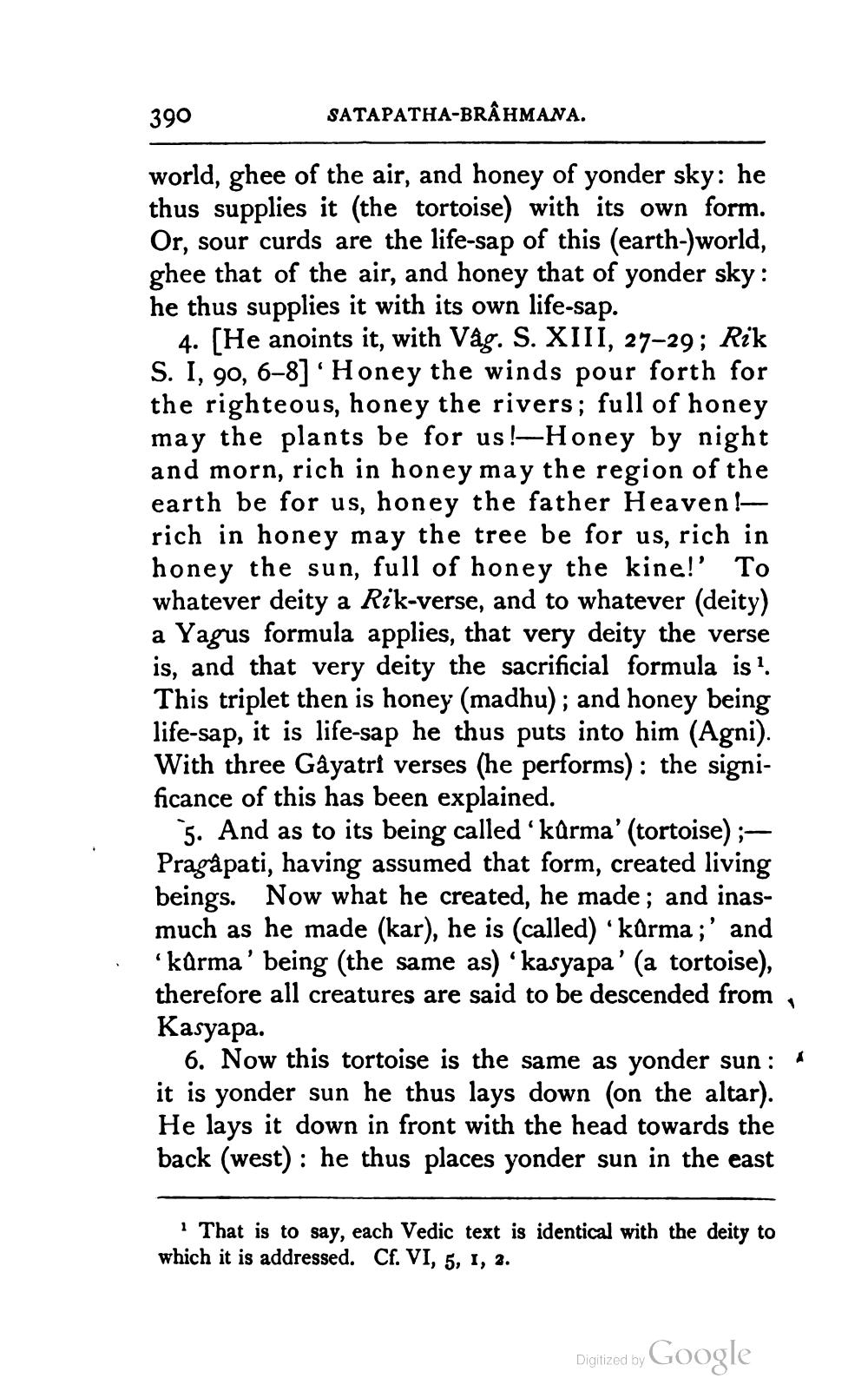________________
390
SATAPATHA-BRÂHMANA.
world, ghee of the air, and honey of yonder sky: he thus supplies it (the tortoise) with its own form. Or, sour curds are the life-sap of this (earth-)world, ghee that of the air, and honey that of yonder sky: he thus supplies it with its own life-sap.
4. (He anoints it, with Vâg. S. XIII, 27-29; Rik S. I, 90, 6–8] Honey the winds pour forth for the righteous, honey the rivers; full of honey may the plants be for us!-Honey by night and morn, rich in honey may the region of the earth be for us, honey the father Heaven - rich in honey may the tree be for us, rich in honey the sun, full of honey the kine!' To whatever deity a Rik-verse, and to whatever (deity) a Yagus formula applies, that very deity the verse is, and that very deity the sacrificial formula is ? This triplet then is honey (madhu); and honey being life-sap, it is life-sap he thus puts into him (Agni). With three Gayatri verses (he performs): the significance of this has been explained.
5. And as to its being called 'kûrma' (tortoise); Pragậpati, having assumed that form, created living beings. Now what he created, he made; and inasmuch as he made (kar), he is (called) 'karma;' and 'kɑrma' being (the same as) 'kasyapa' (a tortoise), therefore all creatures are said to be descended from
Kasyapa.
6. Now this tortoise is the same as yonder sun : it is yonder sun he thus lays down (on the altar). He lays it down in front with the head towards the back (west): he thus places yonder sun in the east
· That is to say, each Vedic text is identical with the deity to which it is addressed. Cf. VI, 5, 1, 2.
Digitized by Google




